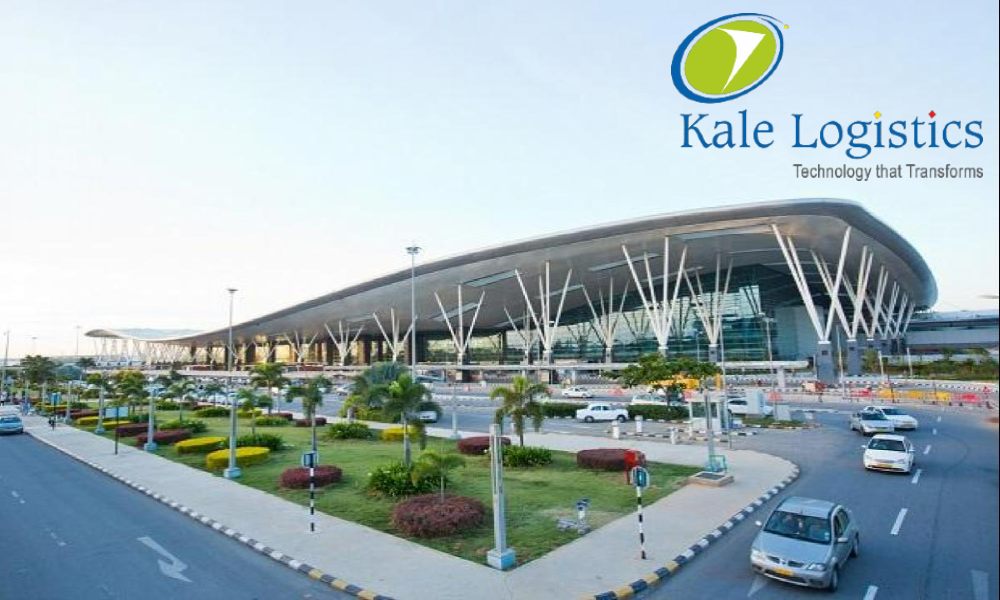
BIAL Airport stakeholders adopt Kale Logistics ACS to digitalise cargo operations
For the ten years preceding the Covid pandemic, BIAL enjoyed 11 percent annual growth in cargo volumes; following a drop in figures between 2020 and 2021 owing to the Covid lockdown in April and May 2020, volumes were running higher than pre-Covid levels by September 2021.

In June this year, Kempegowda International Airport, Bengaluru (BIAL) signed an e-agreement with Kale Logistics Solutions, to develop the ACS platform in an effort to streamline its air freight logistics. Now the airport stakeholders have also adopted 95 percent of the Kale Logistics Solutions’ Airport Cargo Community System (ACS) to streamline their cargo operations as part of becoming a smart airport.
“The idea for the ACS was that we could orchestrate the cargo community, including building a single-window platform, to provide full visibility across the supply chain,” said Satyaki Raghunath, chief strategy and development officer, BIAL.
BIAL also hopes to achieve full digitalisation at the airport in preparation for anticipated growth in cargo throughput.
For the ten years preceding the Covid pandemic, BIAL enjoyed 11 percent annual growth in cargo volumes; following a drop in figures between 2020 and 2021 owing to the Covid lockdown in April and May 2020, volumes were running higher than pre-Covid levels by September 2021.
In August 2021, Bengaluru Airport broke records when it handled the highest monthly cargo throughput since it began operations in 2008. Recent significant infrastructure developments have increased the airport’s annual cargo capacity from 570,000 to 720,000 tonnes, but tonnages are expected to continue growing well beyond this.
A longer-term master plan to relocate the cargo facilities to a new site aims to increase capacity at the airport to 1.5 million tonnes a year.
Also Read: BLR Airport leads as No.1 Indian Airport for perishable shipments
“Realising our cargo business was going to grow, we took the decision to have an ACS. We realised we had to be as efficient and forward-thinking as possible, and Kale presented a very compelling vision and plan,” said Raghunath.
Since implementation, Kale’s ACS has made real-time data available to the whole cargo community at the airport, has significantly reduced duplication and manual data entry, which previously led to errors and wasted time, and has also reduced dwell times and improved security.
The ACS has already connected all air cargo stakeholders at the airport, including customs, customs brokers, terminal operators, shippers, airlines, trucking companies, ground and cargo handlers and freight forwarders.
“Kale’s ACS is a next-gen community platform which will enable collaboration between stakeholders in the supply chain to launch new services and deliver superior customer experiences. Our ACS is built on the principle of enabling a cohesive ecosystem of partnership and driving efficiency in air cargo operations with the highest level of data accuracy, security and compliance,” said Amar More, CEO of Kale Logistics Solutions.
Further refinements to BIAL’s system are already planned, with modules and links to be added to the network, including freight corridors with partner airports and integration with a national airport community system, proposed by the Government of India.
“As we emerge from Covid-19, the fact that we have done this puts us in a good position to reinforce our commitment to the wider cargo community everyone is excited about the future,” said Raghunath.
“In the age of digitalisation, technology adoption is no longer something that airports can ignore. With 95 percent of adoption from the cargo community in Bengaluru, digitisation is already a norm in a major airport in India. Post completion it will set a precedent for other airports too to go 100 percent digital,” said More.
The full roll-out of the ACS at Bengaluru Airport is expected to be completed by the start of 2022.

